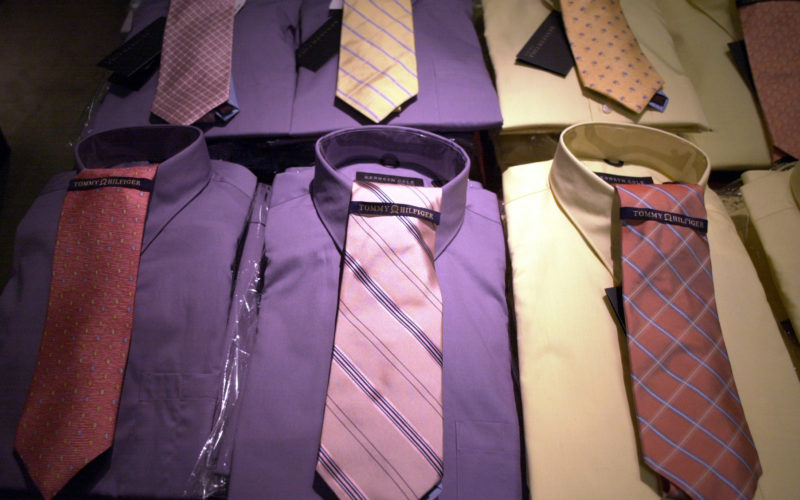Q. I have some shirts that are non-traditional business colors (for instance, one is what they call salmon). How can I wear them for work?
A. Unusual colored or bright-colored shirts can add interest to a man’s look. Options for how to wear them for work are:
- Without a tie
- With a tie
- With a sweater
- With a sports jacket or blazer.
I’m not sure which colors you consider to be non-traditional business colors, but a few that used to be in that category (such as lavender, light green, and soft yellow) are now rather widely accepted. In a dress-down office setting, you can expand your shirt colors even further to include dark red, brighter yellow, olive, royal blue, navy, and perhaps black. Keep in mind that since these are not traditional, they stand out and a well-dressed man avoids adding anything that is too eye-catching to his noticeable shirt. So, whatever you add should be quietly conservative. Your aim is to tone down the offbeat colored shirt. The easiest way is without a tie.
Going without a tie is easiest, because you don’t have to decide how to coordinate the shirt’s color with everything else you are wearing. This does not mean a pink shirt can combine with green pants, but just stay with the simplest color rules: wear your oddball color shirt with neutral color pants.
If you do wear a tie, this is definitely the time for your most conservative and tasteful ties. Choose nothing too bold: solid-color wools, knits, textured and non-shiny solid silks, and subtle all-over silk foulard prints, or, in warm weather, simple cottons and linens. Tie patterns that are considered formal or elegant, such as small polka dots, pindots, and regimental stripes, are too dressy to pair with these “downtown” colored shirts. Balance, appropriateness, and harmony are important elements: dressy with dressy, quiet with quiet.
You can always wear your shirt under a sweater, either a sweater that is color-coordinated or in a contrasting color. Be sure to choose a simple style without odd embellishments. If there is any pattern to the sweater, it must be classic and traditional. The shirt-and-sweater duo can stand alone or you can layer them under a sports jacket or blazer.
The jacket, too, should be rather straightforward. Perhaps a muted tweed sports coat or a not-too-bold windowpane plaid. Blazers in traditional navy, in less-common gray flannel, or in conservative camel’s hair are all fine choices. Dressy suits, such as boardroom dark pinstripes, do not work; but a casual khaki suit does.
These shirts can be perfect for today’s businessman. Men who care about clothes have one big problem with the current trend toward more casual dressing: How to be stylish without a tie. Making a statement with one’s clothes is a lot more difficult when you have eliminated ties — the one item of clothing that most easily and clearly sets one man’s look apart from his colleagues’. If you do decide to go tieless and you enjoy standing out from the crowd, wearing unusual-colored shirts makes sense, as long as the “unusual” does not turn into the “outlandish.”
Please send your men’s dress and grooming questions to MALE CALL: Lois.Fenton@prodigy.net









